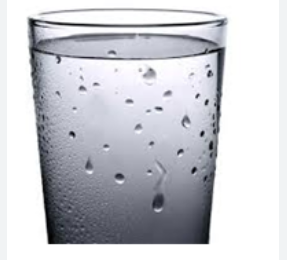Air and Atmosphere Class-7 Dalal Simplified ICSE Chemistry Solutions Chapter-7 Dr Viraf J Dalal Middle School Allied Publishers Solutions. Chapter-7. We Provide Step by Step Solutions of Exercise/Lesson -7 Questions and Answers of Dr Viraf J Dalal Middle School Chemistry Allied Publishers. Visit official Website CISCE for detail information about ICSE Board Class-7.
Air and Atmosphere Class-7 Dalal Simplified ICSE Chemistry Solutions Chapter-7
| Board | ICSE |
| Class | 7th |
| Subject | Chemistry |
| Book Name | Dalal New Simplified |
| Chapter-7 | Air and Atmosphere |
| Unit-1 | Air and Atmosphere |
| Topic | Solution of exercise questions |
| Session | 2023-24 |
Exercise – 1
Air and Atmosphere Class-7 Dalal Simplified ICSE Chemistry Solutions Chapter-7
Question-1. State the meaning of the terms —
(a) Air
(b) Atmosphere
Answer-1: (a) Air – Air is a matter which occupies space, has mass, exerts pressure and is highly compressible
Question 2. Name the important scientists and their studies which led to the discovery of the components of air.
Answer-2: Discoverer of components of air:
- John Mayow – Air has two components i.e. active and inactive
- Lavoiser – Active component of air is oxygen and inactive component of air is nitrogen.
- Other scientists discovered noble gases and carbon dioxide.
Question 3. Explain Lavoisier’s experiment which provided evidence to the discovery of components in air.
Answer-3: Lavoisier’s experiment for the discovery of oxygen. Set up in apparatus as shown in the figure. When mercury oxide is heated in the retort, oxygen is collected in bell jar.

Observation:
- A red layer was formed in the heated mercury surface in the retort.
- The level of mercury in the trough rose by 1/5.
Conclusion: The active part of air removed by mercury on heating was named ‘oxygen’. The remaining inactive part of air in the bell-jar was named nitrogen.
Question 4. Tabulate the various components of air, including the components with variable composition.
Answer-4:
| Components of air | % By volume |
| 1. Main components Nitrogen Oxygen |
78 – 79% 21% |
| 2. Other components Carbon dioxide Water vapour |
0.02 – 0.03% Variable |
| 3. Rare gases Argon, helium, radon, krypton, xenon, neon |
Less than 1% |
| 4. Impurities Carbon monoxide, sulphur dioxide, oxides of nitrogen, hydrogen sulphide, dust particles. |
Variable |
Component of air Variation place to place:
- At high altitudes— The amount of oxygen is less and voice versa
- In deep seas — The amount of oxygen is less and voice versa-
- In industrial areas — The amount of impurities is more
Question 5. Compare the three main components of air e. nitrogen, oxygen and carbon dioxide with reference to their density and solubility, nature and reactivity.
Answer-5:
| Components | Nitrogen (N) | Oxygen (O) | Carbon Dioxide (CO2) |
|---|---|---|---|
| Density | It is as heavy as air. | It is slightly heavier than air. | It is ½ heavier than air. |
| Solubility | It is less soluble. | It is slightly soluble. | It is soluble in water. |
| Nature | Neutral | Neutral | Slightly acidic |
| Combustibility | Non-combustible | Non-combustible | Non-combustible |
| Reactivity | Unreactive | Very reactive | Reactive |
Question 6. Of the total volume of air – 4/5th is nitrogen. State the utility or consequence of this ratio.
Answer-6: The consequence of having 4/5 oxygen and 1/5 nitrogen in air would have been that earth would not have supported this kind of live and there would have been no balance of air and no photosynthesis.
Question 7. State how nitrogen is utilised by plants for their growth. Give a reason why nitrogen is used in flushing food packages.
Answer-7: Nitrogen of air is converted to soluble nitrogenous compounds in the soil in the presence of air and moisture. These-are absorbed by plants and converted to plant proteins. Nitrogen being inert or un reactive is filled into food packets to drive out the oxygen.
Hence bacterial growth inside the food package is reduced and thereby the food is well preserved and fresh.
Question 8. Oxygen of the air is utilised for ‘combustion’ and for ‘respiration’. Compare the two with a suitable examples.
Answer: Oxygen is essential for burning of all components since it supports combustion, oxygen is also essential for respiration of all living things on the earth, it is utilised for respiration.
Burning of a candle involves oxidation of the carbon & hydrogen present in the candle resulting in the formation of carbon dioxide, water vapour and energy in form of heat and light.
Respiration involves oxidation of the carbon & hydrogen present in food materials resulting in formation of carbon dioxide, water vapour and energy in the form of heat.
Question 9. State the utility of carbon dioxide for manufacture of food by plants. State its role in warming the earth’s environment and in excess resulting in global warming.
Answer-9: Photosynthesis— It is a natural process by which green plants manufacture food in presence of sunlight.
Carbon dioxide in the atmosphere is absorbed by the plants in the presence of chlorophyll [the green pigment in plants] & sunlight, hence resulting in the formation of carbohydrates.
Question 10. State the utility of –
(a) Water vapour
(b) Rare or inert gases present in the air.
Answer-10: Use of water vapour:
- For controlling evaporation.
- For determining climatic condition.
- For froth of plant and animal
Use of Rare or inert gases:
- Industries – ranging from electronics
- Glass fibre through lighting to automotive
- Aerospace.
Question 11. Give the environment effect of three polluting gases with a reason why nitrogen is not considered a polluting gas.
Answer-11: Environment effect of three different polluting gases:
- Sulphur dioxide – respiratory problems
- Nitrogen dioxide – acid rainfall
- Carbon Dioxide – Global warming.
Question 12. Describe simple experiments to show the presence of –
(a) oxygen and nitrogen component in air using a bell jar
(b) carbon dioxide in air using a test tube with outlets containing lime water.
(c) water vapour in air using a glass tumbler and ice.
Answer-12: (a) Oxygen and nitrogen in air:
Apparatus— A through, a bell jar, a cork and a crucible and a piece of white phosphorus.

producer-
- The trough is filled with water and a bell jar divided into 5 equal parts, ‘1 to 5’ is placed over it.
- A crucible containing white phosphorus is placed on a cork which is made to float on water.
- The level of the water inside and out ride are adjusted to one level.
- The phosphorus is then ignited by means of a heated wire.
Observation-
- The phosphorus burns in the active component of air [oxygen] forming – dense white fumes of phosphorus pentoxide [P2O5]. Phosphorus + Oxygen →Phosphorus pentoxide
- The level of the water in the bell jar rises by l/5th.
Conclusion-
- Oxygen— The active component of air e. 1/5th pf air is used up in burning.
- Nitrogen— The inactive component of air e. 4/ 5 of air is not used up in burning. Hence air contains oxygen which supports combustion and nitrogen which does not.
(b) carbon dioxide in air using a test tube with outlets containing lime water.
Carbon dioxide in air:
Apparatus- A test tube containing lime water with two outlets ‘A’ and ‘B’.
Procedure -Air is sucked slowly from the outlet ‘B’ as shown above.
Observation – The lime water in the test tube turns milky.
Conclusion – Air which is sucked in from end ‘A’, passes through the lime water and contains carbon dioxide which turns lime water milky [This is a test for carbon dioxide gas].

Water vapour in air:
Apparatus-A clean dry beaker ,cube of ice

Water Vapour (in air)

Water Droplets (on condensation)
Procedure-
- Take a clean glass beaker dried from outside and place pieces of ice in it.
- Keep the beaker with the ice, aside for sometime.
Observation-
- Tiny droplets of water appear on the outer surface of the beaker, which can be proved by using a dry blue cobalt chloride paper. It turns pink in the presence of water.
Conclusion-
- The constituent of air-water vapour- condenses on the cooler surface of the beaker, proving that air contains water vapour.
Question 13. State four different properties of a compound and a mixture. With reference to the stated properties give reasons why air is considered a mixture and not a compound.
Answer-13: Four Properties of compounds:
- They has a fixed composition.
- their properties is deferent from constituent component
- They has definite properties.
- They cannot be separated by physical methods.
Four Properties of mixture:
- Mixture has a variable composition.
- their properties is same as constituent component
- It has no definite properties.
- they can be separated by physical methods.
Question -14. Explain the term ‘air pollution’, with reference to air quality. State the sources of a few main pollutants.
Answer-14: Unwanted change in air which is harmful for man kind directly or indirectly called air pollution.
Natural sources of air pollution:
a. Decay of animal and vegetable matter –
b. Volcanic eruption –
c. Lightning discharge – oxides of nitrogen
Man made sources of air pollution:
a. Burning of fuels –
b. Chemical industries –
c. Iron and steel industries –
Question- 15. Identify the acidic oxides responsible for acid rain. State how their presence results in formation of acid rain. Give a reason why acid rain damages heritage buildings.
Answer-15: [SO2] and [SO3]
Sulphur dioxide + water vapour → Sulphurous acid [H2SO3]
Sulphur trioxide + water vapour→ Sulphuric acid [H2SO4]
[NO] and [NO2]
Nitric oxide + oxygen → nitrogen dioxide [NO2]
Nitrogen dioxide + water → Nitric acid [HNO3]
Why acid rain damages heritage buildings:
Acid rain corrodes metallic surfaces & weakens building materials such as statues, marble, limestone [CaCO3] etc. It causes damage to heritage structures such as the Taj Mahal,
Question 16. In the laboratory preparation of oxygen from hydrogen peroxide – answer the following:
(a) Draw a neat labelled diagram for the method used in the above preparation.
(b) Name the catalyst used in the preparation and state it’s function.
(c) State the word equation for the reaction involving the above preparation of oxygen.
(d) State the method of collection of the oxygen gas giving reasons.
Answer-16: (a) Draw a neat labelled diagram for the method used in the above preparation.

(b) Name the catalyst used in the preparation and state it’s function.
 (d) State the method of collection of the oxygen gas giving reasons.
(d) State the method of collection of the oxygen gas giving reasons.The reasons are:
(1) Oxygen is very slightly soluble in water
(2) Oxygen is almost as heavy as air.
Question- 17. Give word equations for the reactions of –
(a) Non-metals – (1) sulphur (2) carbon (3) phosphorus and
(b) Metals – (1) sodium (2) calcium (3) magnesium with oxygen.
Answer-17: (a) Non-Metals
- Sulphur + Oxygen → sulphur dioxide
- Carbon + Oxygen → Carbon dioxide
- Phosphorus + Oxygen → Phosphorus pentoxide
(b) Metals
- Sodium + Oxygen → Sodium oxide
- Calcium + Oxygen → Calcium oxide
- Magnesium + Oxygen → Magnesium oxide
Question -18. Distinguish between –
(a) Combustion and Respiration
(b) Combustion & Rusting with suitable word equations only ?
Answer: (a) Distinguish between Combustion and Respiration
| Respiration | Combustion |
| Respiration is a biochemical process that takes place in living cells to release energy. | Combustion is a chemical process that occurs outside living cells or living systems. |
| Respiration is a controlled biological process. | Combustion is an uncontrolled process. |
(b) Distinguish between Combustion and Rusting
| Combustion | Rusting |
|---|---|
| It takes place in a variety of materials. | It is confined only to iron. |
| Moisture is not required. | Moisture is essential. |
| Oxides are formed of carbon and hydrogen | Oxide of iron is formed. |
| Heat is evolved at a rapid rate and rises in temperature. | Heat is evolved at a slow rate and causes a slight rise in temperature. |
Question 19. Give the main experimental points only to demonstrate that – (a) magnesium (b) candle-gains weight on burning.
Answer: (a) To show that magnesium gains weight on burning:
A small piece of magnesium is kept in a crucible with lid. It weighs 50g
Now, the crucible is heated and the lid is opened for while such that ashes do not come out.
Now when we weigh the crucible, it weighs 50.82 grams, this shows something is added to magnesium. It is the weight of oxygen which is added to magnesium
2Mg + O2 → 2MgO
Hence magnesium gains weight on burning.
(b) To show that Candle gains weight on burning:

Apparatus – Unlit candle ‘A’ . U Tube ‘B’ containing anhydrous CaCl2 , Conical flask ‘C’ containing concentrated KOH solution
The whole apparatus is weighed first. Total wt = a gms.
Then, the candle ‘A’ is lit, and the products are allowed to absorb in tube ‘B’ and flask ‘C’
The candle is burnt for some time now and it is reweighed now.
There is an increase in the weight of apparatus.
It can be concluded that candle gains weight due to mass of oxygen in the air which is combined with the carbon and hydrogen of candle.
Water vapour and carbon dioxide are produced.
Question 20. Give reasons for the following:
(a) patients suffering from lung problems are kept in an oxygen tent.
(b) oxygens finds utility in welding & cutting of metals.
Answer: (a) A Patients who is suffering from lung problems are kept in an oxygen tent due to artificial supply of oxygen.
(b) because of Oxy-acetylene flame provides temperature around 3000° C and oxy-hydrogen flame provides temperature around 2800°C. hence Oxygen finds utility in welding and cutting of metals.
– : End of Air and Atmosphere Class-7 Dalal Simplified ICSE Chemistry Solutions :–
Return to – Dalal Simplified Chemistry for ICSE Class-7 Solutions
Thanks
Share with your friends.


